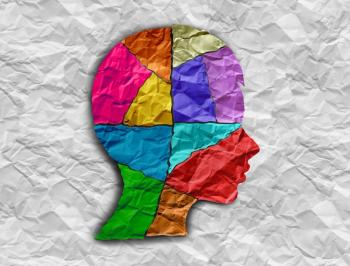
Adverse Effects of AEDs and How to Ameliorate Them
Effective antiepileptic therapy depends on balancing seizure control and tolerability, said Manoj Raghavan, MD, PhD, during a presentation at the midyear meeting of the American Epileptic Society in Chicago this past June. Tolerability places a ceiling on how far you can go in controlling seizures using medications alone, he commented.
Effective antiepileptic therapy depends on balancing seizure control and tolerability, said Manoj Raghavan, MD, PhD, during a presentation at the midyear meeting of the American Epileptic Society in Chicago this past June. "Tolerability places a ceiling on how far you can go in controlling seizures using medications alone," he commented.
Raghavan, who is assistant professor of neurology at the Medical College of Wisconsin in Milwaukee, cited a provocative study1 that showed that adverse effects from therapy had a significantly stronger impact on quality of life for patients with epilepsy than did seizures. Frank Gilliam, MD, MPH, the Caitlin Tynan Doyle Professor of Neurology and director of the Comprehensive Epilepsy Center at Columbia Medical Center in New York City, conducted the study with a team from Washington University in St Louis. The team assessed 195 consecutive patients treated at the university's Adult Epilepsy Center who completed the Adverse Events Profile questionnaire, the Quality of Life in Epilepsy Inventory-89, and the Beck Depression Inventory. "After controlling for age, sex, complex partial and generalized tonic-clonic seizure frequency, and depressive symptoms, we found that adverse medication effects had the strongest correlation with [health-related quality of life]," wrote Gilliam in a review that was published in a supplement to Neurology in 2002.1
However, managing adverse effects is tricky--not only because therapy needs to be finessed, but also because not all adverse effects are overt. "Many adverse effects need to be screened for, such as hematologic or hepatic toxicity and effects on bone density, the endocrine system, and reproductive health," Raghavan explained. Chronic CNS effects need to be sought out, as well as whether the patient's antiepileptic drug (AED) is interacting with his or her other medications.
"Almost all AEDs can produce CNS adverse effects, such as dizziness, somnolence, lethargy, fatigue, tremor, headache, blurred vision, ataxia, insomnia, and confusional states; however, these effects are typically dose-dependent," said Raghavan. Physicians should screen for cognitive adverse effects, which Raghavan noted are commonly seen with agents such as phenobarbital, primidone, and topiramate (Topamax). He added that some agents, such as levetiracetam (Keppra), might cause aggression and irritability in some patients. Table 1 lists adverse effects and the agents most likely to be associated with them.
Although allergic rashes may occur with use of any agent, those more likely to be associated with hypersensitivity are carbamazepine, phenobarbital, phenytoin, and primidone, reported Raghavan. Those less likely to cause an allergic rash include valproate (Depacon), gabapentin (Neurontin), topiramate, and tiagabine (Gabitril). "AED use also has been associated with bone demineralization in both adult and pediatric patients," reported Raghavan. He said that risk appears higher with the enzyme-inducing agents, but that valproate, an enzyme-inhibitor, also may be a culprit.
As for effects on sexual function, Raghavan noted that AEDs are seldom screened for. He also noted that a question that is receiving more research interest of late is whether problems with sexual function are related to AED therapy or to epilepsy itself. "Causes of male and female sexual dysfunction in epilepsy may be multifactorial," he commented. A related issue of particular importance, added Raghavan, is the link between enzyme-inducing AEDs and contraceptive failure, which is often not discussed with patients.
Reduced contraceptive effectiveness attributed to rapid hepatic metabolism of hormonal agents has been associated with carbamazepine, phenobarbital, phenytoin, primidone, topiramate, oxcarbazepine (Trileptal), and tiagabine. Agents less likely to interfere with the activity of hormonal contraceptives include ethosuximide, felbamate (Felbatol), gabapentin, lamotrigine (Lamictal), levetiracetam, pregabalin (Lyrica), valproic acid, and zonisamide (Zonigran).2
Teratogenicity is a particular concern related to AED use. Raghavan cited a recent review by Perucca,3 who noted that, although numerous studies have been conducted, getting scientifically definitive answers about the link between AEDs and birth defects is challenging because of shortcomings in the methodology of many studies. To get a better picture, registries have been set up to collect data on pregnancy outcomes in women with epilepsy (see "A Push Toward Safer Treatment of Epilepsy in Women," page 8).
In any case, Raghavan reminded the audience that valproic acid "shows a consistently high dose-dependent risk of teratogenicity across studies."3 Table 2 lists Pregnancy Category C and Category D agents.
POPULATION-SPECIFIC CONSIDERATIONS
Different population groups, of course, have different needs and vulnerabilities in terms of antiepileptic therapy. For women of childbearing age, issues pertaining to contraception, sexuality, reproductive health, risk of teratogenicity, and effects of AEDs on breast-feeding and on infants exposed in utero are all valid concerns that need to be addressed, noted Raghavan.
In children, physicians need to pay special attention to effects on the endocrine system, including impact on bone health, weight, and growth. Behavioral effects of AEDs are also of importance in children, particularly those with attention deficit hyperactivity disorder, autistic spectrum disorders, or developmental delays.
Drug interactions and appropriate drug dosing that factor in changes in pharmacokinetics (ie, slower metabolism, decreased protein binding, and decreased renal clearance) need to be addressed, especially in elderly patients. Patients with comorbidities--many of whom are elderly patients with epilepsy--also represent a population that needs special attention in relation to AED therapy. Comorbidities related to hepatic or renal dysfunction, cardiologic disease, hypoproteinemia, weight gain, and bone loss will all impact choice of AED therapy and clinical management.
MINIMIZING ADVERSE EFFECTS
"In selecting an AED that best suits a patient, consider age, sex, comorbidities, and concomitant therapies," said Raghavan. "Also, consider agent-related factors such as excretion, pharmacokinetics, and agent-specific adverse effects. Furthermore, forewarn patients of anticipated adverse effects," he added.
Most AEDs should be started at a low dose, if possible, and titrated up slowly, recommended Raghavan. "Allow for a period of habituation and screen the patient at every visit for adverse signs and symptoms." Raghavan also cautioned clinicians not to rely merely on patient self-reports of chronic adverse effects, because they are very often underreported (such as cognitive or sexual dysfunction or mood changes) or unrecognized (such as bone demineralization or endocrine dysfunction) by patients.
"Drug-level monitoring, which is routinely done when older AEDs are used, also may be useful in guiding dose adjustments for optimal therapeutic trials of the newer agents," explained Raghavan. Monitoring is called for when adverse effects appear with low doses, or inadequate efficacy is encountered despite high doses; when medication switches are made; or when the patient is pregnant, exposed to polypharmacy, has comorbidities that may affect pharmacokinetics; or when therapy adherence issues arise.
"Because polypharmacy increases the risk of pharmacokinetic and pharmacodynamic interactions and creates additional challenges to identifying the cause of an adverse effect, monotherapy is preferred in the treatment of patients with epilepsy," said Raghavan. "Insufficient data exist to guide evidence-based or 'empirical' polytherapy," he added. "The concept of 'rational polytherapy,' on the other hand, entails combining agents that have different mechanisms of action, do not have undesirable pharmacokinetic or pharmacodynamic interactions, or have adverse effect profiles that suggest minimal combined risks." Raghavan said one example is the use of lamotrigine in combination with valproic acid, which may have a synergistic effect,4 "aside from the prolongation of lamotrigine half-lives caused by enzyme inhibition by valproic acid." Other approaches are add-on therapy with a renally excreted drug for a patient who is taking hepatically metabolized AEDs, or the use of a mood-stabilizing agent, such as lamotrigine, in combination with levetiracetam to ameliorate the neuropsychiatric adverse effects of levetiracetam.5
Raghavan also briefly mentioned some prophylactic strategies that are currently recommended, such as multivitamin supplements, calcium and vitamin D supplements (to help prevent bone loss) and high-dose folic acid supplementation (to reduce risk of birth defects), but noted that the effectiveness of these strategies still remains to be established.
REFERENCES1. Gilliam F. Optimizing health outcomes in active epilepsy. Neurology. 2002;58(suppl 5):S9-S20.
2. Morrell MJ. Guidelines for the care of women with epilepsy. Neurology. 1998;51(5 suppl 4):S21-S27.
3. Perucca E. Birth defects after prenatal exposure to antiepileptic drugs. Lancet Neurol. 2005;4:781-786.
4. Brodie MJ, Yuen AW. Lamotrigine substitution study: evidence for synergism with sodium valproate? 105 Study Group. Epilepsy Res. 1997;26:425-432.
5. Mula M, Trimble MR, Yuen A. Psychiatric adverse events during levetiracetam therapy. Neurology. 2003;61:704-706.
6. Morrell MJ, Guidice L, Flynn KL, et al. Predictors of ovulatory failure in women with epilepsy. Ann Neurol. 2002;52:704-711.
7. Betts T, Yarrow H, Dutton N, et al. A study of anticonvulsant medication on ovarian function in a group of women with epilepsy who have only ever taken one anticonvulsant compared with a group of women without epilepsy. Seizure. 2003;12:323-329.
8. Herzog AG, Drislane FW, Schomer DL, et al. Differential effects of antiepileptic drugs on sexual function and hormones in men with epilepsy. Neurology. 2005;65:1016-1020.
Newsletter
Receive trusted psychiatric news, expert analysis, and clinical insights — subscribe today to support your practice and your patients.













